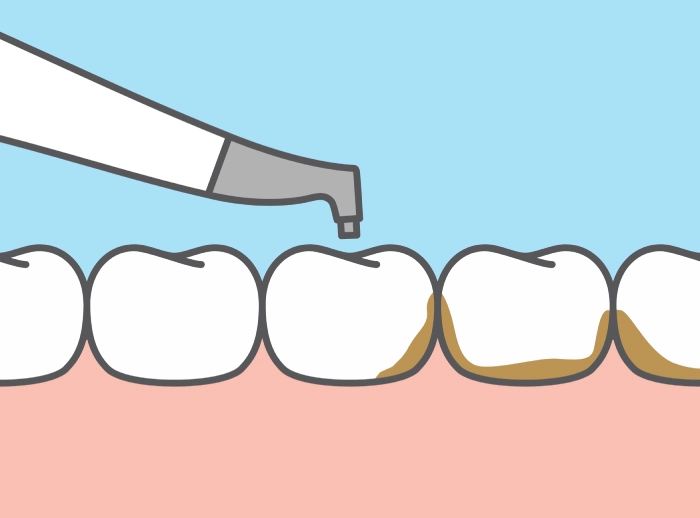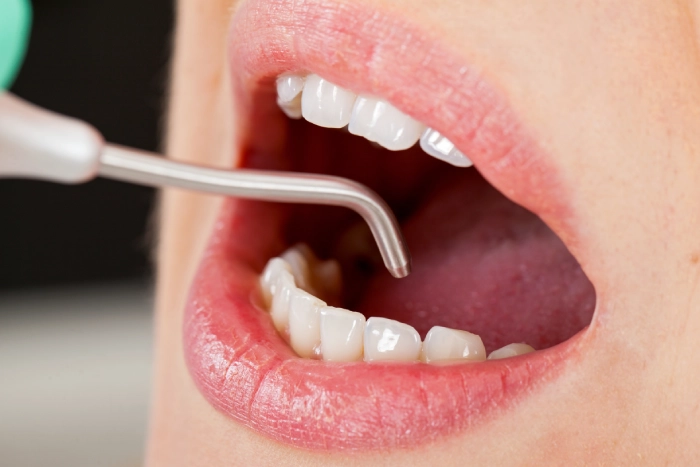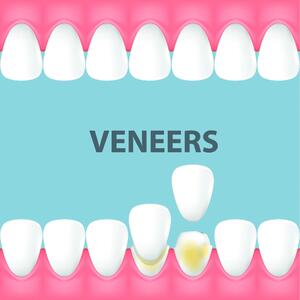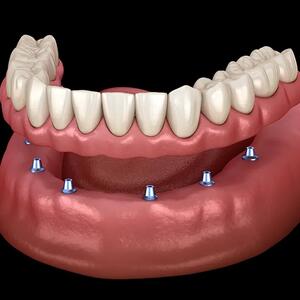AirFlow Teeth Cleaning
Rid yourself of dental plaque quickly and painlessly with AirFlow – the most advanced teeth cleaning technology. Discover how AirFlow can transform your smile and become a key ally for anyone seeking excellence in oral care. Learn how AirFlow works and how effective it is. Embrace a new era in oral hygiene care!
What is AirFlow Cleaning

It is a popular method of professional teeth cleaning from soft deposits, biofilm, pigment, and bacterial plaques. The cleaning solution consists of compressed air, water, and powder (sodium bicarbonate, known as baking soda).
AirFlow effectively removes dental deposits, even in hard-to-reach areas that cannot be cleaned at home. The procedure includes cleaning the tooth surface, interdental spaces, and periodontal pockets (up to 5 mm). It is performed by a dentist or dental hygienist.
AirFlow is often used as an independent procedure, but it is usually combined with ultrasonic cleaning. This combination ensures a more thorough and effective cleaning of the oral cavity, contributing to the health of teeth and gums. This leads to an even more remarkable improvement of the smile.
Benefits of AirFlow Teeth Cleaning

- Promotes fresh breath.
- Enhances the appearance of the smile, making it fresher. Whitens teeth, making them more attractive.
- Removes pigmentation caused by smoking or consuming staining drinks and foods.
- Effectively removes bacterial plaque, preventing cavities and gum problems such as gingivitis and periodontitis.
- Prepares for further dental procedures, such as fitting braces, crowns, or teeth whitening.
- Creates a smooth and clean surface, preventing the accumulation of bacteria and plaque.
Who is Suitable for AirFlow Teeth Cleaning
Recommended for many patients, especially in the following cases:
- Unpleasant breath.
- For comprehensive therapy of inflammatory gum diseases.
- For maintaining oral health and preventing inflammatory processes.
- When using orthodontic braces or in cases of crowded teeth.
- Presence of dental plaque, pigmentation stains from smoking, and drinking tea, or coffee.
- In preparation for other dental procedures.
Contraindications:
- Children under 14 years of age.
- Allergy to components of the powder.
- Acute phase of gum inflammation.
- Recent surgical intervention in the oral cavity, such as tooth extraction.
- High sensitivity of the enamel.
- Viral diseases, colds.
- Bronchial asthma or other respiratory diseases.
How Does AirFlow Teeth Cleaning Work?
AirFlow teeth cleaning is based on mixing compressed air, water, and fine powder, directed under pressure onto the teeth. This creates micro-impacts that mechanically remove plaque and pigments. The water flow immediately washes away abrasive residues and dirt, making the teeth cleaner and shinier. The procedure carefully cleans the teeth without damaging the enamel.
AirFlow removes soft plaque, preventing it from hardening, which can cause cavities and gum inflammation.
Advantages of AirFlow Teeth Cleaning
- The alkaline components of the powder have disinfecting properties, preventing pathogenic processes in the mouth.
- Effectively removes pigment stains and deposits.
- Is painless for the patient.
- Eliminates bad breath.
- Cleans hard-to-reach areas in the mouth, such as around braces, between teeth, and periodontal pockets.
- Gentle cleaning without damaging the enamel or injuring the gums.
- The procedure lasts 30 minutes, and the result is immediate.
The only drawback of the AirFlow system – it is not effective against hard tartar. For this, ultrasound is used, which effectively destroys and removes hard deposits.
Steps of Professional AirFlow Teeth Cleaning
The dentist assesses the plaque on the teeth. Prepares the patient – puts on protective glasses and headgear. Lips are coated with Vaseline and open skin areas are covered with towels. A mouth opener is installed and a saliva ejector is placed under the tongue to remove the used solution and loosened plaque.
If there are hard deposits or tartar, ultrasonic cleaning is performed. Ultrasonic waves break the stone into small particles. Then a strong jet of water washes them away.
A mixture of water and air with powder is applied under pressure. The doctor carefully treats each tooth from all sides, avoiding the gums. The intensity of the jet can be adjusted. The powder removes bacterial plaque, pigmentation, and soft deposits from the enamel. All these residues along with the solution are quickly removed by the saliva ejector.
The dentist applies polishing paste to the teeth and thoroughly treats their surface with a bristle brush. This makes the teeth smooth, which hinders the accumulation of plaque.
Finally, the enamel is coated with a special fluoride-containing varnish or gel. This coating protects the enamel from destruction, has bactericidal properties, strengthens, and enriches with minerals. It is an effective means of preventing cavities.
Which is Better – Ultrasound or AirFlow?
Dentists often combine both cleaning methods to remove soft and hard deposits. Each method has its own goals, advantages, and limitations. The dentist decides which method is better to use, based on the degree and type of dental deposits.
| Ultrasound | Air-Flow |
|---|---|
| Effectively removes tartar. | The procedure does not require local anesthesia and does not cause pain. |
| The ultrasound tip generates high-frequency vibrations that break down and remove hard deposits. | The jet of the cleaning solution mechanically removes deposits from the enamel surface. |
| Pain may occur during the cleaning process. The dentist can offer local anesthesia for pain relief. | Removes soft plaque and pigments, effective for prevention. |
Questions & Answers
How should I care for my teeth after cleaning?
- Visit the dentist every six months for a preventive check-up.
- Use dental floss to remove food residues.
- Avoid smoking initially.
- Replace your old toothbrush with a new one with soft bristles.
- Continue to brush your teeth twice a day with a soft brush and fluoride toothpaste.
- Limit the consumption of products with staining effects. Refrain from food that increases enamel sensitivity.
- Avoid hard food on the first day after cleaning.
How long does the effect last after the procedure?
The result lasts for about six months if the patient follows the dentist's advice, properly maintains oral hygiene, and leads a healthy lifestyle.
For individuals prone to oral inflammations, more frequent professional teeth cleaning (every 3-4 months) is recommended. For example, smokers, patients with braces or dental prostheses, those with crowded teeth, or inflammatory periodontal diseases.
What to expect during the procedure?
AirFlow does not cause pain, but you may feel a sensation of wateriness in the mouth. To alleviate any discomfort, the dentist can apply a local anesthetic spray to the treated area upon the patient's request. This makes the dental visit more comfortable.
Does Air-Flow cleaning damage tooth enamel?
No, it safely removes plaque and pigmentation spots without the risk of damaging the enamel. It is a less aggressive procedure compared to mechanical or ultrasonic cleaning. The abrasive powder gently removes soft accumulations without leaving scratches on the enamel layer, preserving its integrity.
Can Air-Flow whiten teeth?
AirFlow helps to lighten the enamel by 1-2 shades by removing visible impurities. However, it does not change its natural color and is not a method for radical whitening. For more significant color changes of the teeth, other whitening techniques and procedures are usually used.


